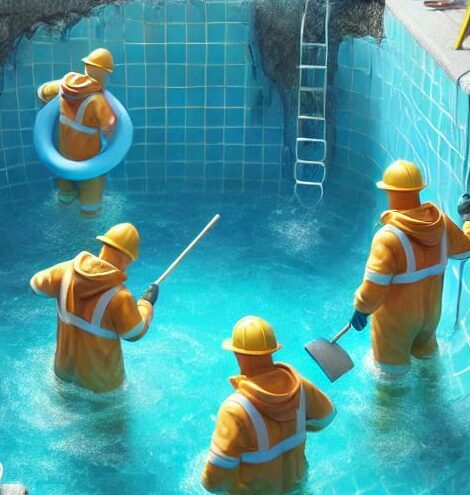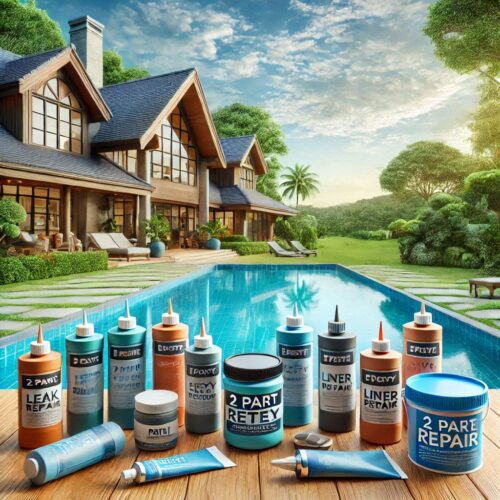Owning a swimming pool is one of life’s great joys, but it comes with its challenges—and leaks are at the top of the list. Even the best-maintained pools are prone to leaks caused by wear and tear, shifting ground, or minor accidents. Small cracks or holes can often go unnoticed until they create bigger problems, costing you money and time.
But don’t worry, pool owners! With the right leak repair products and some know-how, fixing your pool doesn’t have to be overwhelming. With this comprehensive guide, you’ll learn why timely repairs are critical, discover the best products on the market, and get step-by-step instructions on how to tackle those pesky leaks, DIY-style.
Recognizing the Common Causes and Signs of Pool Leaks
Before jumping into solutions, it’s vital to identify if your pool is leaking. Some common causes include:
- Aging materials: Over time, plaster, vinyl liners, and concrete can crack or degrade.
- Structural shifts due to ground movement or unforeseen settling.
- Equipment failures like worn-out pump seals, cracked pipes, or loose fittings.
- Frequent wear and tear from water pressure and constant usage.
Wondering if your pool has a leak? Look for these tell-tale signs:
- Unexplained drops in water level beyond normal evaporation.
- Consistent wet spots near the pool that never seem to dry.
- Cracks, tiles detaching, or visible damage to pool surfaces.
- Increased water bills—or more trips to the hose to refill!
If any of these sound familiar, it’s time to act.
Why Timely Pool Leak Repair is Non-Negotiable
Ignoring pool leaks—even small ones—comes with real risks.
- Structural Damage: Leaks compromise your pool’s foundation, potentially leading to major structural repairs.
- Rising Costs: Water loss not only wastes a natural resource but increases your water bills over time. Additionally, replacing pool water means rebalancing chemical levels, which can be costly.
- Damage to Your Property: Prolonged water leakage may weaken nearby soil and damage surrounding landscaping or structures.
- Health Hazards: Pool chemistry becomes harder to control with ongoing water loss, creating a breeding ground for algae and bacteria.
Timely repairs save money, reduce hassle, and extend the life of your pool—they’re essential for every pool owner.

The Lowdown on Swimming Pool Leak Repair Products
The good news? The industry offers a variety of innovative tools and products designed to simplify pool repair. Here’s what you should know about the most popular repair solutions available today:
Epoxy Sealants
Epoxies are a go-to option for sealing surface cracks or holes in concrete pools. These versatile products bond directly to materials underwater and harden into long-lasting seals. They’re a favorite among DIYers due to their ease of use.
Vinyl Patches
Perfect for above-ground or vinyl-lined pools, vinyl patch kits come with adhesive patches that effectively seal tears or punctures. Some options even work underwater, avoiding the need to drain your pool.
Pool Putty
This clay-like material is ideal for quick fixes for cracks or leaks in small cracks, fittings, or pool lights. It hardens underwater, making it invaluable for emergency repairs.
Leak Detection Kits
Unknown leak location? No problem. Leak detection kits use special dyes to help you trace the source of the issue by following where the dye gets sucked into cracks or punctures.
Liquid Sealants
Liquid sealants bond to pool surfaces once poured into leaking areas. Best for small leaks or as temporary solutions, these products save the hassle of draining your pool.
The real challenge lies in finding the right product for your specific needs.
Hydraulic Cement
For a durable and lasting solution, hydraulic cement is an innovative option for sealing leaks in concrete pools. This fast-acting material sets quickly and expands as it hardens, creating a tight, waterproof seal that stops leaks even under pressure. Perfect for structural repairs, hydraulic cement is highly versatile and can be applied to cracks, joints, and voids. Its strength and reliability make it an essential tool for addressing stubborn leaks and restoring your pool’s integrity with confidence.
Master DIY Pool Repairs with These Simple Steps
If you’re a hands-on DIY enthusiast, repairing your pool leak is easier than you think. Follow these step-by-step instructions for a hassle-free process.
Step 1: Identify the Leak
Use a leak detection kit to pinpoint the exact location of the problem. Note whether the leak is near fittings, lights, or the pool structure itself.
Step 2: Gather Your Materials
Pick a repair product suited for your pool type and leak. Make sure you have gloves and basic tools like brushes or scrapers to prepare the surface.
Step 3: Prepare the Surface
For best results, clean and dry the leaking area if possible. Underwater repairs? Remove debris and lightly sand the surface before applying the product (if required).
Step 4: Apply the Product
Follow product-specific instructions carefully. For sealants and putties, press them firmly into cracks to ensure proper bonding. With patches, smooth out air bubbles to prevent peeling.
Step 5: Allow it to Set
Give the product adequate time to cure or dry as instructed. This step is essential for a long-lasting repair.
Step 6: Test the Results
Once the repair is complete, monitor your water level over a few days to see if the leak persists.
Congratulations! You’ve just saved your pool.

DIY Repairs vs. Professional Help
Debating whether to handle repairs yourself or call in the pros? Here’s a quick comparison.
DIY Repairs
Pros
- Cost-effective
- Perfect for minor leaks and quick fixes
- Immediate action in emergencies
Cons
- Limited to accessible, smaller-scale issues
- Risk of improper application or use of wrong products
- Time-consuming if multiple repairs are needed
Professional Help
Pros
- Knowledgeable and experienced technicians for accurate diagnosis and repair
- Wide range of equipment/tools for various types of leaks and pool structures
- Potential warranty coverage on work done
Cons
- Higher upfront cost compared to DIY repairs
- Longer wait time for scheduling appointments
- May require additional costs for parts or labor not covered by warranty
Prevention is Key
While DIY repairs can be a great solution for minor pool leaks, it’s important to understand that prevention is always better than a cure. Here are some tips to help prevent future leaks:
- Regularly check and maintain your pool’s water level
- Keep an eye out for any signs of damage or wear, such as cracks or tears in the liner
- Schedule routine inspections and maintenance with a professional
- Use proper cleaning equipment and chemicals to avoid damaging the surface or structure of your pool
- Consider investing in a pool cover to protect against outside elements and debris
By following these simple steps, you can help prolong the life of your pool and minimize the need for repairs. However, if you do encounter a leak, don’t hesitate to tackle it head-on with these DIY techniques or seek professional assistance if needed. Remember, proper maintenance is key to enjoying a beautiful and functional swimming pool all year round!

